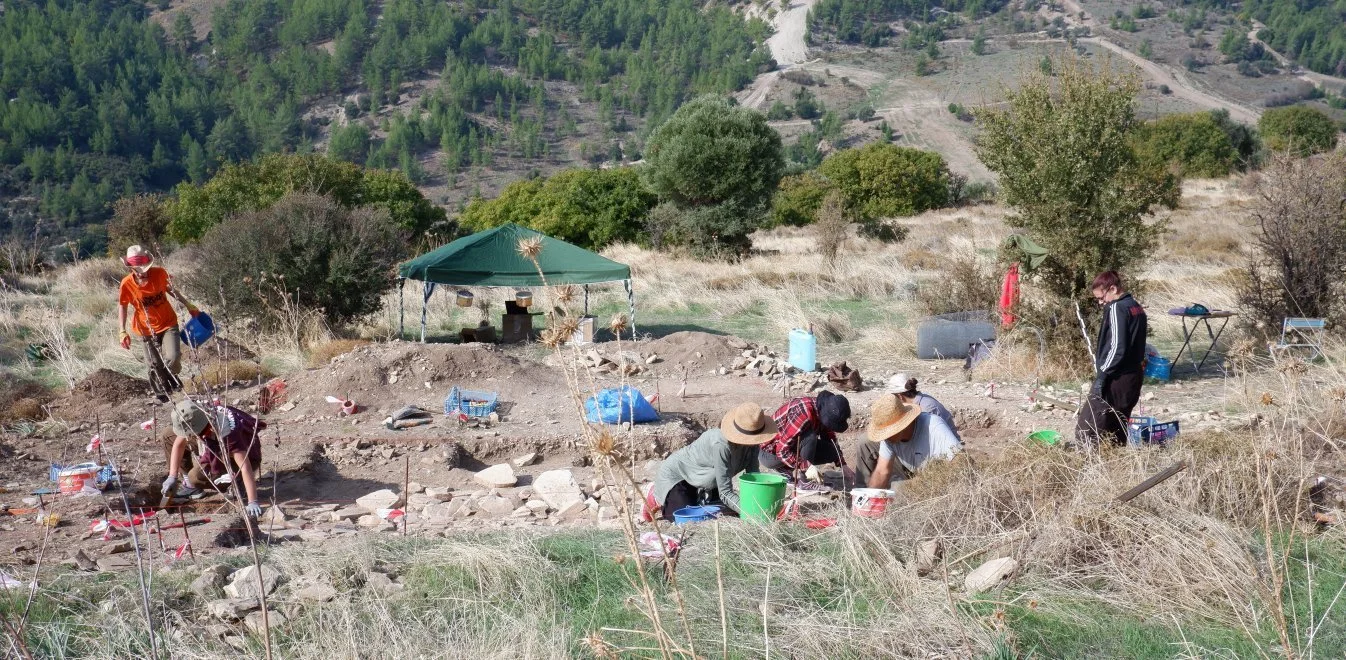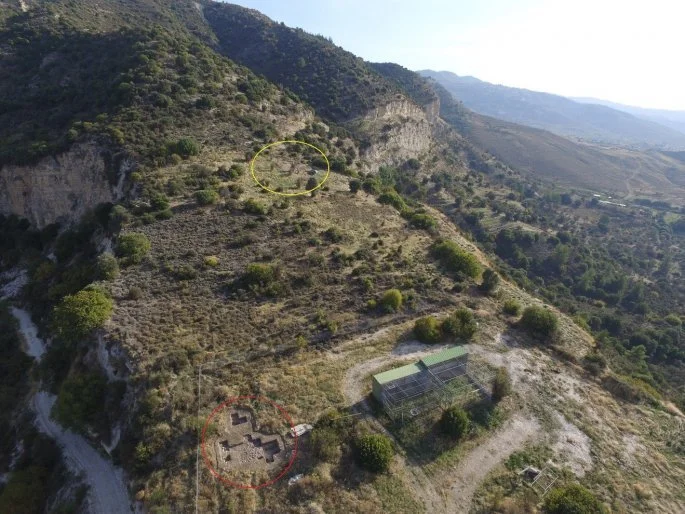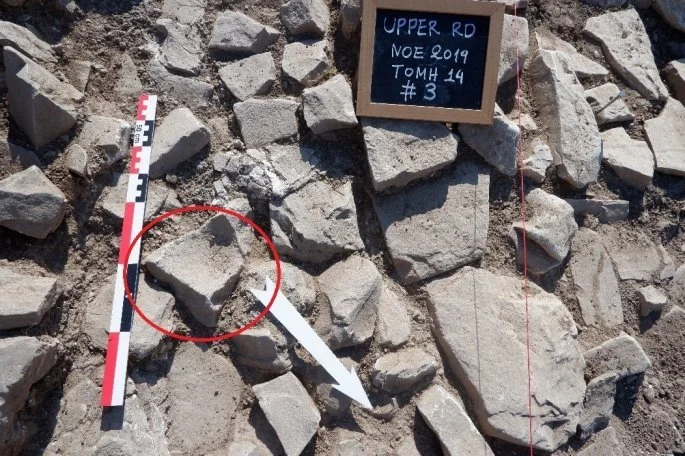The use of a building of monumental proportions discovered on Mount Troodos by the excavation team of Nikos Efstratiou, professor of prehistoric archeology at the Aristotle University of Thessaloniki, remains unknown. The mystery of the prehistory of Cyprus is enriched.
The building, dated to an early phase of the Ceramic Neolithic around the middle of the 7th millennium BC, was discovered on Mount Troodos at an altitude of 500 meters, surprising researchers who previously believed that prehistoric developments, especially those of the Ceramic Neolithic period, exclusively affected coastal areas and sites in Cyprus, such as Choirokoitia-Vouni, Kalavasos-Tenda and Apostolos Andreas-Kastro.
"The existence of such a stable, clean and large building in an area that was not the center of development is puzzling, and its further study will lead to useful conclusions," says Professor Nikos Efstratiou.
Who could erect a monumental building in an isolated position? And most importantly, what was the purpose of this building in a "camp" of hunter-gatherers in the upper part of the Xeros Valley, in the area of Paphos? The scientific community in Greece and Cyprus considers any hypothesis premature. It is possible that this was a meeting place for groups of breeders, but this also needs to be studied in depth to be confirmed. However, it reinforces the assessment of archeologists that during the early prehistoric years Mount Troodos was not an area where exclusively seasonal and marginal activities were carried out (hunting, gathering food), but on the contrary defined the constant presence of farmers and breeders, groups characterized, among other things, by intense mobility, contacts and the transport of raw materials such as picrolite - a type of stone with a bright blue color that came down the river.
The building was located in Agios Ioannis/Bretsia-Ano Roudia. It is a stone building with a diameter of at least 7 meters, extremely carefully constructed, with a double row of buildings preserved in very good condition, while inside there are indications of constructions - possibly rectangular columns. Smaller buildings and a garbage dump were also found. According to Mr. Efstratiou, the movable finds include a number of animal bones (sheep, goats, foxes), flint jewelry, chipped flint tools, ground tools and stone vessels.
It is noted that the 7th millennium BC for Cyprus is without the presence of pottery (non-ceramic phase), a strange fact, as throughout the mainland environment, pottery was already in use. Why communities in Cyprus were so late in making and using ceramic vessels is an inexplicable problem for researchers. The prevailing opinion is that prehistoric Cypriot society, because of its insular isolation, may have developed a conservatism that characterized many aspects of its tradition. The building's enigmatic use worries the scholarly community in Greece and Cyprus, while its unveiling upends the image of cultural peripherality for the mountainous Cypriot hinterland. Moreover, the new site joins the few excavations from the "pig-farming phase" (ca. 6400-5,600 B.C.) explored so far at Cyprus.
The building was located only a few dozen meters from the chronologically oldest hunting camp of the 9th millennium, that of Agios Ioannis/Bretsia-Roudia, which has been systematically excavated in recent years by the team of N. Efstratiou. During the excavations, the professor came across finds from the period after 6,500 BC and suspected that something else might have been located a little higher up. So he climbed up a few meters and came across a building of monumental proportions that seems to overturn much of what Cyprus knew until today about its cultural tradition and the role of the hinterland in prehistoric development.
The research was carried out in 2019 in two phases, in June and in November, with funds secured by the Rectorate of Aristotle University of Thessaloniki and thanks to the kind sponsorship of Aegean Airlines, which, as every year, funds the transition of the research team. Apart from the use of the impressive circular building, the archaeologists now want to find out if it is the only building on the site or if this particular extensive terrace includes other structures with similar or different layouts and sizes. According to archaeologists from the Cyprus Antiquities Authority, there are already superficial indications that the Ano Roudia Terrace area most likely houses other buildings that are still waiting to be discovered. For example, traces of a stone enclosure(?) that may have encompassed the entire site have already been detected along the western side of the terrace and at various locations.
The presence of the Aristotle University of Thessaloniki in Cyprus dates back at least to the 1960s, when George Bakalakis, Professor of Classical Archaeology at the Aristotle University of Thessaloniki, carried out excavations at Athienou in the province of Larnaca, an area that appears to have been inhabited since the 14th century BC. After that, there was no university excavation on the island for several years until N. Efstratiou came there in 2006-2007. As a professor of prehistoric archaeology at the Aristotle University of Thessaloniki, he researched Pindos for years and discovered archaeological finds that Neanderthals moved and hunted along the mountain peaks, while until recently it was known that they moved in the plains and other lower-lying areas.
"Having studied the importance of mountains in the development of prehistory, I thought it would be interesting to go to Cyprus and see what happened on Mount Troodos. The unveiling of the monumental building provides new information, and the study of the material will shed even more light on the prehistory of the island. We believe that the continuation of A.U.Th.'s excavations in Cyprus will also unearth other important finds from early prehistory and, most importantly, overturn years of stereotypes about the organization of Cypriot society thousands of years ago", he says.
It is pointed out that the early prehistory of Cyprus is today one of the most interesting and challenging topics in the archaeology of the Eastern Mediterranean, covering a wide range of research and interpretation issues. This is, after all, the reason why it has rightly been the focus of international research interest in recent years. To date, the arrival of groups of hunters and food gatherers on the island in the mid-11th millennium BC and then of the "first farmers", who brought with them sophisticated forms of spatial, social, and economic organization from the continental Near East has been documented. For scholars, the narrative of the early prehistory of Cyprus represents an extremely interesting attempt at a prehistoric reconstruction of an island territory and the challenges it faced.










